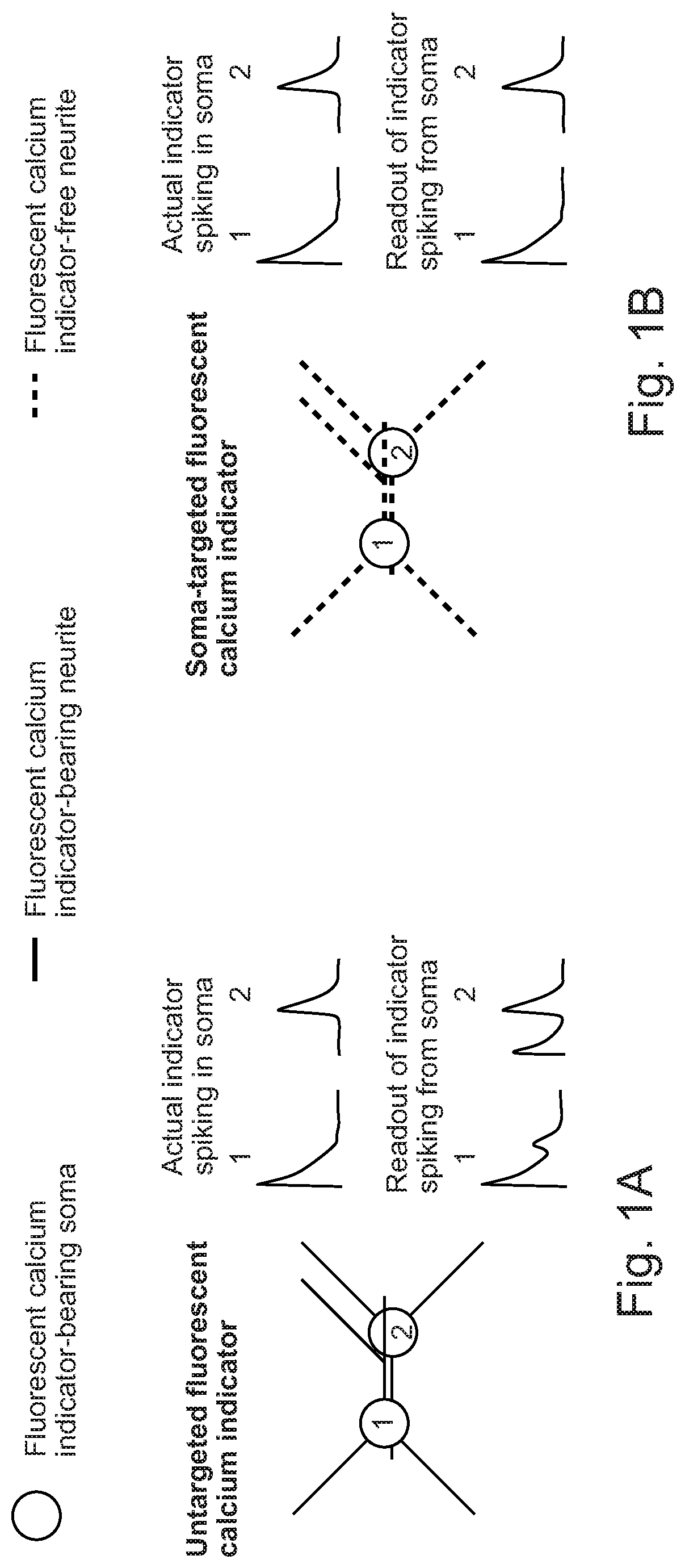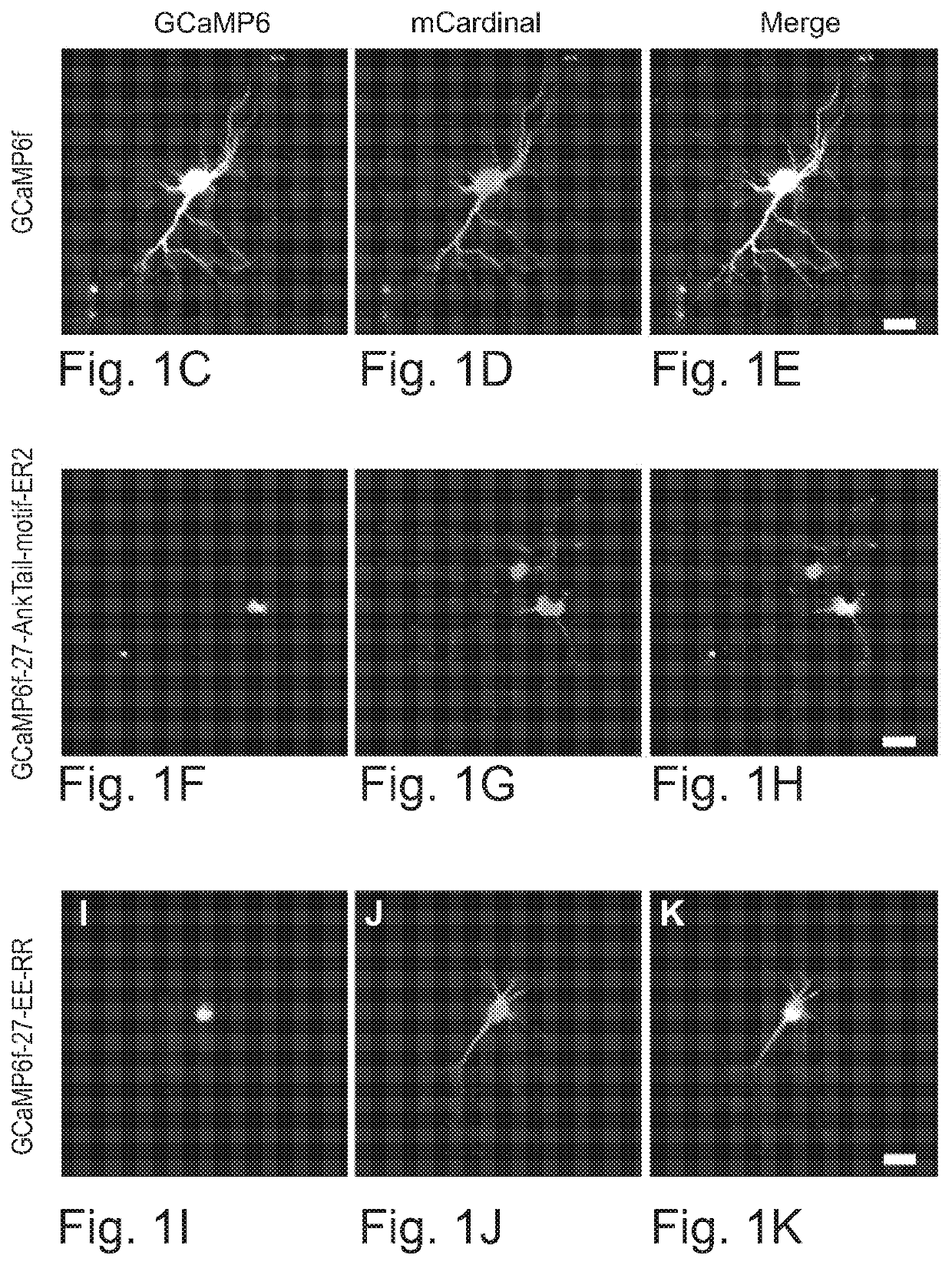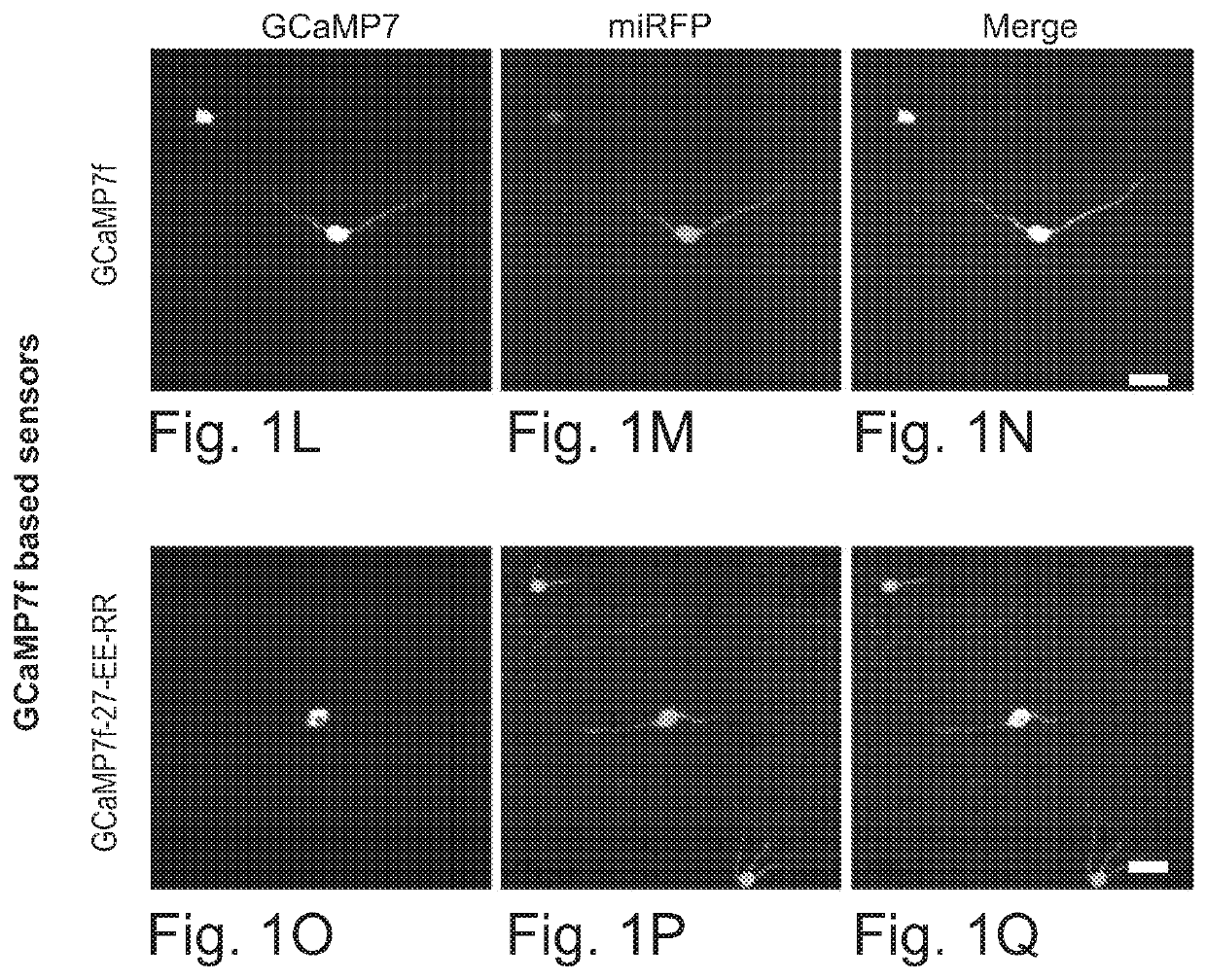Cell Body Targeted Sensors
a cell body and targeted technology, applied in the field of polypeptide molecules, can solve the problems of poor multicellular resolution, hinder imaging, and inability to determine whether the calcium sensor is used, and achieve the effects of stimulating the host cell, increasing the indicating characteristic, and increasing the ion-conductan
- Summary
- Abstract
- Description
- Claims
- Application Information
AI Technical Summary
Benefits of technology
Problems solved by technology
Method used
Image
Examples
example i
[0104]Both two-photon (Chen et al., 2013; Helmchen and Denk, 2005; Raichle et al., 1998) and one-photon imaging modalities have resolution limits that will typically mix signals from cell bodies with those from closely passing axons and dendrites, resulting in artifactual correlations of measured neural activity (FIG. 1A-1B). This crosstalk between neuropil signals and cell body signals can be somewhat mitigated in two-photon microscopy by restricting measurements to the interiors of cell bodies; the crosstalk problem is worse for one-photon epifluorescent methods, where contamination of somatic signals by neuropil signals may be impossible to overcome (Chen et al., 2013; Harris et al., 2016; Peron et al., 2015).
[0105]As a result, many studies use computational methods to attempt to clean up the in vivo calcium signals, algorithmically correcting somatic signals for the neuropil contribution (Andilla and Hamprecht, 2014; Mukamel et al., 2009; Pinto and Dan, 2015; Pnevmatikakis et al...
PUM
| Property | Measurement | Unit |
|---|---|---|
| ion conductance | aaaaa | aaaaa |
| ion-conductance | aaaaa | aaaaa |
| ion conductance activity | aaaaa | aaaaa |
Abstract
Description
Claims
Application Information
 Login to View More
Login to View More - R&D
- Intellectual Property
- Life Sciences
- Materials
- Tech Scout
- Unparalleled Data Quality
- Higher Quality Content
- 60% Fewer Hallucinations
Browse by: Latest US Patents, China's latest patents, Technical Efficacy Thesaurus, Application Domain, Technology Topic, Popular Technical Reports.
© 2025 PatSnap. All rights reserved.Legal|Privacy policy|Modern Slavery Act Transparency Statement|Sitemap|About US| Contact US: help@patsnap.com



